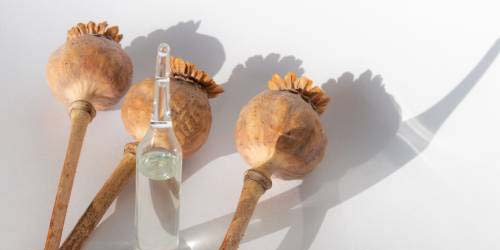
There is almost nothing in our world with a richer history than Opium. The drug, extracted from the Papaver somniferum, was used thousands of years before our era. The substance from the sleeping bulb rocked the world. From opium drugs such as heroin, to opiates such as morphine. Read the story behind opium and all its variations here.
Disclaimer: we are talking about opium and opiates in this blog. These substances are addictive and often extremely bad for your health. This article is not intended to encourage the use of these substances. We only want to inform you about the appearances, effects, production methods and history of these substances.
What is Opium?
Opium is extracted from the immature seed pod of the Papaver somniferum. That seed pod is also known as the sleeping bulb. By making a cut in the seed pod, milk juice flows out. When the milk juice is dried, a hard, brown substance is produced: opium.
Opium is used as a drug, but that is not the only thing by far. Opium contains all kinds of alkaloids. These are nitrogen-containing substances that have a certain effect on the human body. The most well-known alkaloids in opium are morphine, codeine, thebaine and noscapine. From these alkaloids, for example, medicines such as oxycodone or drugs like heroin are made. All substances extracted from opium are also called opiates, but more on that later.
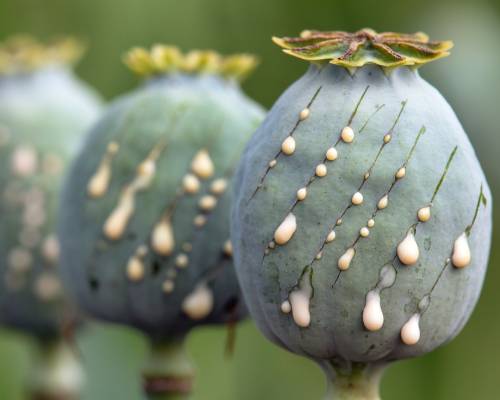
The cut-up seed pod of Papaver somniferum or sleeping bulb with leaking milk juice.
Effects of Opium Drugs
You can use opium drugs in a variety of ways. It can be smoked, injected, swallowed or drunk. Opium is highly addictive. Whole populations throughout history have become addicted to the drug. There is good reason for that. The opium drug is analgesic, sedative, narcotic and it induces a feeling of happiness. You imagine yourself in a dreamlike reality and feel blissful. Sadness, hunger and fear are suppressed. This is why, for example, it was widely used by soldiers and warriors during wars and battles. The most bizarre things can be read in opium drug trip reports. From people who can see through walls to starring in their own imaginary movie.
The Sleeping Bulb and Other Types of Poppy
So the Papaver somniferum is also called the sleeping bulb. From that sleeping bulb, not only is opium extracted, but also poppy seeds. Besides the sleeping bulb, the Papaver somniferum also produces a beautiful gray-pink flower. By the way, you can easily grow the plant yourself with Opium Poppy seeds. They thrive best in climates that are not too cold.
Do not confuse the sleeping bulb with other types of poppy. The "opium poppy" is an annual plant in the poppy family, which has about 60 subspecies. Poppies are also called horn roses. Some examples are the Papaver hybridum and the Papaver orientale. These species also produce a seed pod, but therefore no opium can be extracted from it. However, these poppies all produce beautiful flowers.
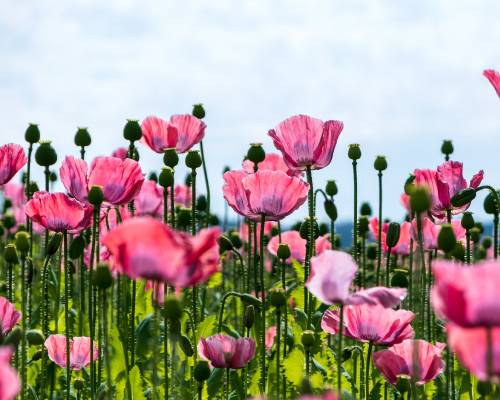
What are Opiates?
Substances from opium are used all over the world as medicines or drugs. These substances are also called opiates. An opiate is a substance you can extract from opium, or substances you can prepare from it. All opiates work as powerful painkillers because they bind to opioid receptors in your brain. Opiates are something other than opioids. This refers to all substances that respond to opioid receptors in your brain. So also substances that are indigenous to the body or completely synthetic. Opioids do not necessarily have to be extracted from Papaver somniferum. Opiates do.
Morphine
Opium consists of 10 to 15% morphine. In 1803, the German pharmacist Friedrich Sertürner discovered morphine. A year later, he managed to isolate this alkaloid from opium through a chemical process. Morphine is many times stronger and more addictive than opium itself. The substance is named after Morpheus, the Greek god of dreams. In the nineteenth century, it was used as a drug. Like opium, it has a similar, dreamlike effect. Today it is used as a medicine for severe (chronic) pains and insomnia. You often get it administered after an operation in the hospital, and sometimes with an epidural for a birth paralyzed by pain. Morphine is even listed as an essential drug by the World Health Organization WHO.
What is Heroin and How is it Made?
So morphine is extracted from opium. And you guessed it: heroin is made from morphine. Heroin is basically a chemical substance, but the raw material is natural. It is a very powerful drug that you can smoke, snort or inject. It has similar effects to opium, but many times stronger. It provides intense pleasure. You are completely out of this world after using it. You can become addicted after just one use, so please don't do it.
Heroin is made by heating morphine with acetic anhydride for a long time. What is left is a liquid, which is mixed with sodium carbonate, giving it a solid form. Then you filter the heroin back out of the sodium carbonate with alcohol, ether or hydrochloric acid. In its purest form, it can contain 80% to as much as 90% heroin [2].
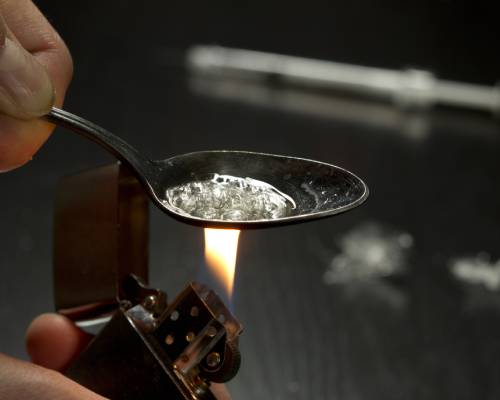
Heroin is heated so it liquefies and can be injected.
Methadone, Oxycodone, Codeine and Other Opioids
Besides morphine and heroin, there are dozens of other opiates and opioids. Well-known ones include codeine, fentanyl, methadone and oxycodone. Codeine is an opiate that can be made from morphine. It is less potent than other opioids and also has fewer side effects. It is prescribed for relatively mild pain symptoms as well as for suppression of itchy coughs because it reduces stimuli. Methadone is a lot stronger already and is very similar to morphine. It is widely used as a rehab drug in heroin addiction, but can also serve as a severe painkiller. Oxycodone has been in the news a lot in recent years. The opioid is commonly prescribed for pain after surgeries or treatments and is highly addictive. Like fentanyl, for example, it is also used in palliative care of cancer patients, for example.
Other examples of opioids include hydrocodone, tramadol, buprenorphine, dihydroetorphine, hydromorphone and ohmefentanyl. The last one is one of the strongest painkillers on earth. It is about 18,000 times stronger than morphine and is used to knock elephants flat. Another notable one is naloxone. This is a special opioid used as an antidote to overdose on other opioids.
How Do Opiates or Opioids Work?
When you have pain, cells called neurons send signals to your brain. Your brain interprets these signals as pain. Many neurons in your body are coated with proteins called opioid receptors. These receptors act as a kind of brake on the ability of neurons to send signals to your brain when you are in pain. Our bodies also produce endorphins: a body's own opioid, which fit into the lock of the opioid receptors like a key. The receptors are then activated, slowing pain signals and keeping you from panicking.
When pain persists, you may suffer from anxiety and depression. In that case, opioids or opiates such as morphine, codeine and oxycodone can help. They work as painkillers because they have a chemical similarity to our own endorphins. Like this body's own substance, they fit the lock and can bind to the same opioid receptors to stop pain signals. But there is also a downside.
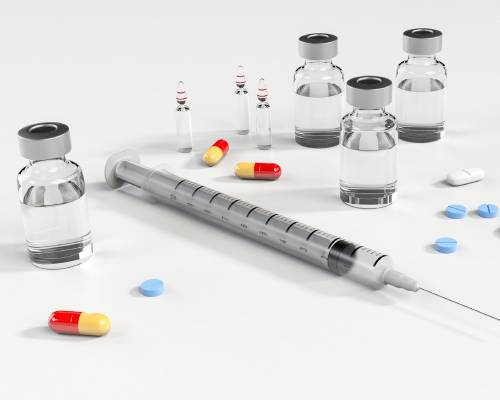
All kinds of opiates, extracted from opium.
Our brain makes the neurotransmitter through dopamine neurons. It is released when something nice happens and it makes you feel good. Our body keeps dopamine production in check with inhibitory neurons until something nice happens. Just like on pain neurons, there are also opioid receptors on these neurons. When you take opioids, they also bind to these receptors, stopping your body from inhibiting the production of dopamine. Lots of dopamine is released, so you don't feel depressed or anxious temporarily. Instead, you feel nice and euphoric.
If you keep taking opioids, your brain responds by regaining balance. Inhibitory neurons start working extra hard even as opioid receptors are activated by the opiates. As a result, your body has increasing difficulty making dopamine. Increasing the dose of opioids can temporarily counteract this, but in fact the problem only gets bigger and bigger.
When you stop taking painkillers, you don't just feel pain, anxiety and depression. You feel ravaged by an inescapable physical illness far worse than the flu. Your body is in withdrawal: you are addicted to opiates. Some people cope with this better than others and stop taking painkillers. For people who are more susceptible to addictions, it is not so simple. The withdrawal symptoms become unbearable, so you continue to use opiates. A vicious cycle that millions of people are still stuck in today. The video below explains it all again.
Opium Crisis
So opiates can be enormously dangerous if used irresponsibly. As recently as the beginning of this century, this led to hundreds of thousands of deaths in the United States and other countries [3]. This is called the opium crisis. This refers to the deaths of patients due to the overuse of opioids. So not only deaths due to heroin addictions, but precisely deaths due to overuse of drugs such as tramadol, oxycodone and fentanyl. In addition to the deaths, millions more people are addicted to these types of drugs. In 2017, there were about 2.5 million in the United States alone [4].
How could such a major crisis have happened in this day and age? Much less was known about how opioids work 30 years ago. In addition, many drugs and medications were available illegally in large numbers, so they were not controlled and used responsibly. The finger is also pointed at the pharmaceutical industry. They allegedly marketed drugs similar to opioids under a different name in the 1990s. Doctors then prescribed these far too easily and too often as painkillers. With serious consequences.
History of Opium
Opium has a rich history. In fact, you can almost say that there is no plant with a richer history than the Papaver somniferum. As with the hemp plant, its use dates back thousands of years before our era. There is evidence that the opium poppy was cultivated as early as 4000 B.C., in the cradle of civilization: mesopotamia. The Sumerians refer to it as "scream" or "the plant of joy". In ancient Egypt, the Ebers papyrus, an ancient medical text, recommends smearing opium on the nipples of nursing mothers to help small children sleep. In the Odyssey, Homer writes of those who mourn for family members lost in the Troy. And how Helena, the daughter of Zeus, puts a medicine in wine to soothe all pain and anger and bring remission to any grief. Opium, in other words.
For China, opium is a dark page in history. There the drug was used as medicine for hundreds of years. First by drinking the milk juice from the seed bulb of the poppy, but in the fifteenth century people found out that the dried milk juice could also be smoked. It was used as a stimulant, aphrodisiac and as a drug to relax from reality. Large sections of the population became addicted to opium. The Dutch and British, among others, took advantage of this and earned a lot from exporting it to China.
In the eighteenth century, the government realized that opium was so addictive that it caused problems. In 1729, the use and trade of opium was banned by Emperor Yongzheng. The Chinese decided to destroy large shipments of opium, which led to two bloody wars with the British. The first opium war took place between 1839 and 1842 and the second between 1856 and 1860. Finally, it was not until the early twentieth century that agreements were reached restricting the supply of opium to China.
In Europe in the sixteenth century, opium was popular in another manifestation: laudanum. That is the tincture of opium. When morphine was discovered, people used it as a drug to get rid of laudanum addiction. That didn't work, of course, because morphine is many times stronger than opium. By the nineteenth century, opium was freely available in various places in Europe, leaving hundreds of thousands of people addicted. "Opium dens" came over from Asia. These were places where opium was sold and used. It was usually run by Chinese gangsters. The business was full of users smoking opium from special pipes.
Opium Conference
By now, the whole world agreed that opium and opiates were doing humanity no good. Therefore, an opium conference was organized in The Hague in 1911 at the initiative of the United States. An Opium Treaty was finally signed in 1912 that would, among other things, suppress opium production and curb the trade in raw opium. It also required countries to establish rules and laws regarding the use of opiates for medicinal and scientific purposes.
Did you find this interesting? Check out other articles from our blog. Dutch-Headshop writes about all types of drugs you can imagine!
Sources:
[1] Paul Van Deun, De Drugslijn (2018). “Heroïne, de meestgestelde vragen”.
[2] Jellinek (2019). “Hoe wordt heroïne gemaakt?“
[3] Centers for Disease Control and Prevention (2021). “The Drug Overdose Epidemic: Behind the Numbers”.
[4] NRC (2017). “Heroïne spuiten in de auto, met je kleinkind op de achterbank.”
[5] Zorginstituut Nederland (2022). “Farmacotherapeutisch Kompas, Geneesmiddelenoverzicht Opioïden”.
[6] Apotheek.nl
[7] BBC Studios.
[8] Sonia Moghe, CNN. “Opioid history: From ‘wonder drug’ to abuse epidemic”.
[9] Opiaten.nl
[10] Hemmings HC, Egan TD (2013). “Pharmacology and Physiology for Anesthesia: Foundations and Clinical Application: Expert Consult”.
[11] Offermanns S (2008). “Encyclopedia of Molecular Pharmacology”.